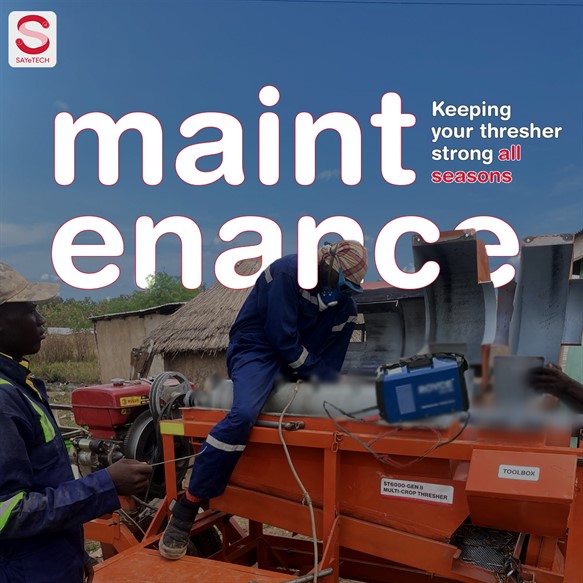As we gear up for another harvest season, it is time to put your multi-crop thresher to use. Whether you are an existing owner of a thresher or intending to buy one, here is a cheat sheet to get th best out of the multi-crop thresher. The ST6000 Multi-crop Thresher is designed to meet the rigorous demands of post-harvest processing for multiple crops, but like any machine, it requires regular maintenance to perform at its peak. Below is a detailed maintenance guide to keep your machine running smoothly and avoid costly breakdowns.
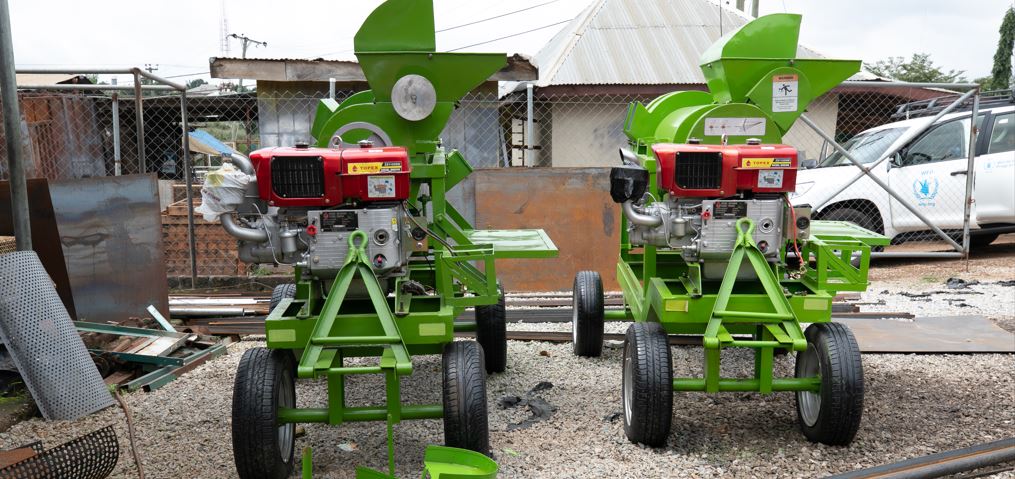
Daily Maintenance
- Check Engine Oil Level: Before operating the thresher, always check the engine oil level using the dipstick. Maintaining proper oil levels ensures smooth engine operation and reduces friction in moving parts, preventing wear and tear. Add oil if the level is low, using the recommended grade for optimal performance.
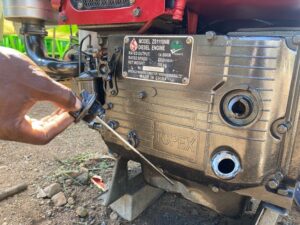
ST6000 Thresher Engine Oil being checked with dipstick - Inspect and Tighten Bolts and Moving Parts: Vibrations during operation can cause bolts to loosen over time. Inspect all bolts, nuts, and fasteners daily and tighten them as needed. Focus on high-stress areas like the threshing drum, drive shaft, and transmission components.
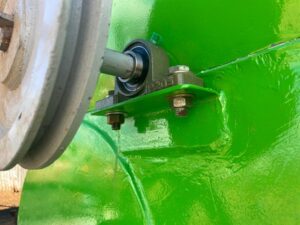
ST6000 Thresher Bolts check - Grease Bearings and Moving Parts: Proper lubrication is essential to prevent wear on bearings and moving parts. Apply grease to all bearings, joints, and rotating components either before or after each use. This helps reduce friction and prevents overheating.
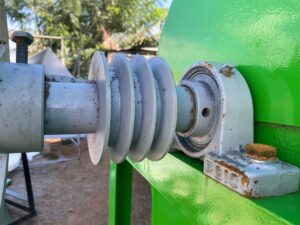
ST6000 Thresher moving parts - Maintain Fuel Levels: Avoid running the fuel tank dry. Diesel engines rely on consistent fuel supply, and running out can introduce air into the fuel lines, leading to engine stalling or damage. Always have extra fuel on hand before starting operations.
- Clean the Air Filter: A clean air filter ensures the engine gets enough airflow for efficient combustion. Clean the air filter element daily to prevent dust and debris from hindering engine performance.
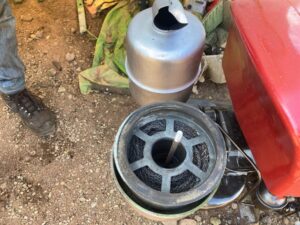
ST6000 Engine Air filter undergoing check - Clean the Thresher After Use: Chaff and debris can accumulate in the threshing drum and other parts. Clean the machine thoroughly after each use to prevent clogging and reduce wear on components.
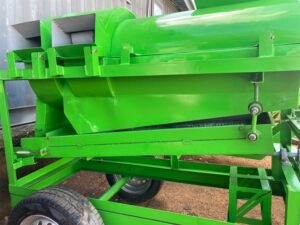
Maintaining a Clean thresher body
Weekly Maintenance
- Check Tyre Pressure: Check tyre pressure weekly to ensure proper inflation. Underinflated tyres lead to poor maneuverability and faster wear, while overinflation reduces traction. Adjust pressure as needed.
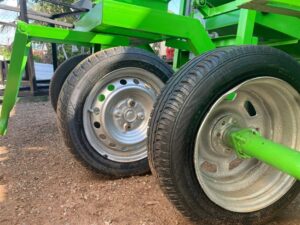
Tyre pressure check - Clean the Air Filter with Compressed Air: Once a week, remove the air filter and clean it using low-pressure compressed air. This removes fine dust particles that daily cleaning may miss, ensuring continued engine efficiency.
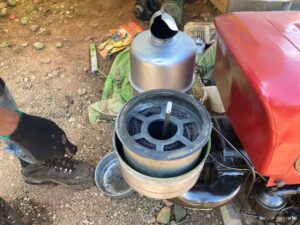
Air filter - Inspect Thresher Belts and Components: Inspect all belts, particularly the drive belts and threshing belt, for signs of wear or cracks. Replace damaged belts immediately to avoid unexpected breakdowns during operation.
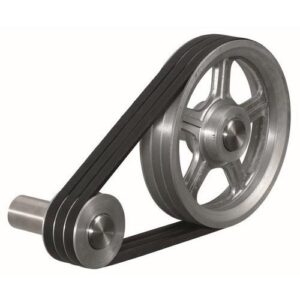
Thresher belt and pulley system - Drain and Clean Cooling Water System: The cooling system is vital for maintaining engine temperature. Drain the cooling water weekly to remove dirt and deposits, and refill the system with clean water or appropriate coolant.
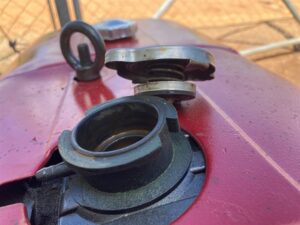
Thresher Cooling tank
Monthly Maintenance
- Inspect the Threshing Drum: The threshing drum is central to the ST6000’s operation, and any damage here can severely impact performance. Open the drum monthly and check the following:
- Inner Sieve: Inspect for breaks or tears, which can allow unthreshed material to pass through.
- Spikes: Look for bent or damaged spikes, which can reduce threshing efficiency. Replace any worn or broken spikes.
- Repair or Replace Damaged Components: If the inner sieve is damaged or spikes are loose, contact SAYeTECH for repair or replacement. Operating with damaged parts will degrade threshing quality and may cause further damage to the machine.
- Inspect Suction Systems: The primary and secondary suction systems are responsible for separating grains from chaff. Inspect these systems for blockages or damage. Contact SAYeTECH for professional repairs if necessary.

Wrapping it up. By following this maintenance schedule, the ST6000 thresher will continue to operate efficiently, reducing downtime and extending the lifespan of your machine. Stay connected for further usage and maintenance tips in the future.
In case you haven’t acquired a thresher yet, reach out to SAYeTECH for a great offer! Visit our contact page to get started.
You Have It!
